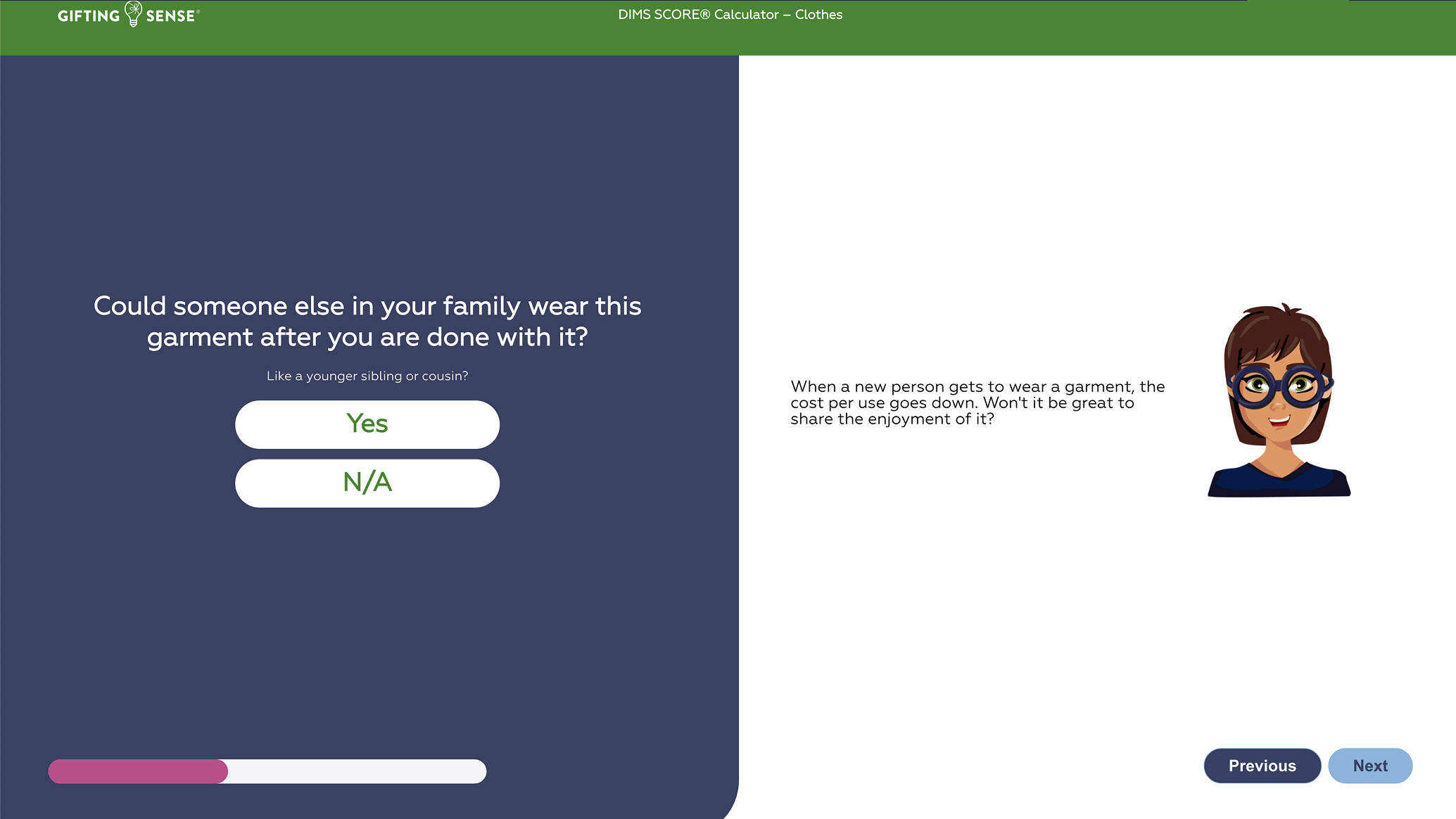This post was originally written in October of 2015! We updated it in October 2024 preparing for the launch of Gifting Sense 2.0.
People sometimes ask why a DIMS-DOES IT MAKE SENSE?® SCORE question is worded or scored the way it is. We created the DIMS SCORE® blog series to take you through the journey of thinking that led to the site and tool you see today. This post discusses why kids can answer “Yes,” “No,” “Sometimes,” “Not Sure,” or “Not Applicable” when using the DIMS SCORE® Calculator.
Kids are super smart!
We used yes or no answers when we began developing the DIMS SCORE® calculator. Then, we ran our first pilot—and guess what? Children very quickly discovered that generally speaking, answering “No” reduced their DIMS SCORE®. They were gaming the calculator before the end of the first day!
Sometimes, a question really doesn’t apply to your particular set of circumstances.
Upon further reflection, we realized that if the answer to a question was “No,” it was often because it wasn’t truly wasn’t applicable to whether or not a possible purchase makes sense at a moment in time; for example, only children don’t have siblings. So, we added “N/A” (as well as “Sometimes” or “Not Sure”) to the list of possible answers.
Do you have a sibling or cousin who could wear this outfit after you? This is an example of a question where the best possible answers for many young people are “Yes” or “Not Applicable.” “Are you planning to attend this event with a friend?” “Not Sure” is a perfectly acceptable answer at first pass. “Can you play with this toy outside?” “Sometimes” is another perfectly fair response!
But you’ll always know how a DIMS SCORE® was arrived at…
As you might expect, generally speaking, if you answer “Yes” to a question, your DIMS SCORE® goes up. If you answer N/A, that question no longer impacts your score’s calculation. But don’t worry, the beauty of a DIMS SCORE® Report (which is easily generated when young people calculate the DIMS SCORE® for a possible purchase) is that it illustrates all the math and thinking kids have gone through – including every single DIMS SCORE® question answered. So you’ll be able to see exactly how the young person in your life arrived at the decision that the purchase they’re considering might make sense – when you receive their report. And that is really what calculating a DIMS SCORE® is supposed to do – help everyone involved in a consumer decision understand why they’re making it, as well as how much money and effort it requires.
If you have any other questions, any at all, as you explore and learn about our site, please write to us. User feedback helps us teach young people to think before they spend in the most engaging way possible. As you know, we believe the habit of slow spending has to be one of the best gifts a young person can ever receive.
Please click on the pink or blue buttons below to learn more about our approach to early financial education.
DIMS SCORE® Questions For Parents For Teachers



